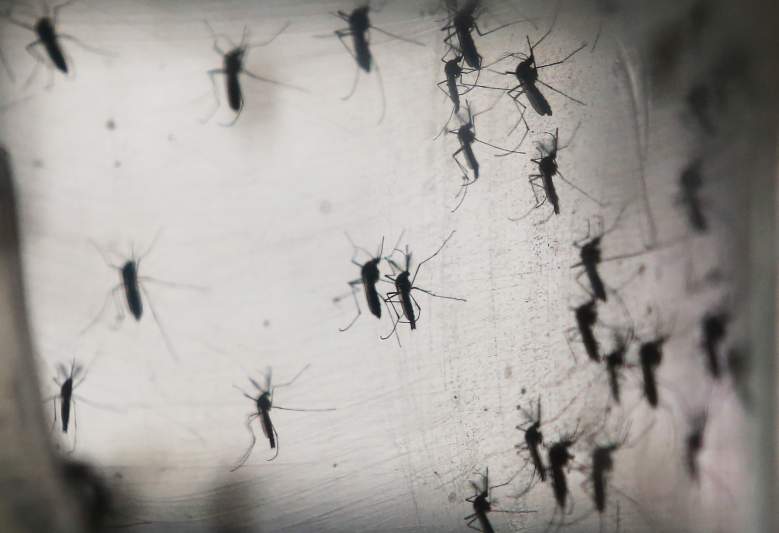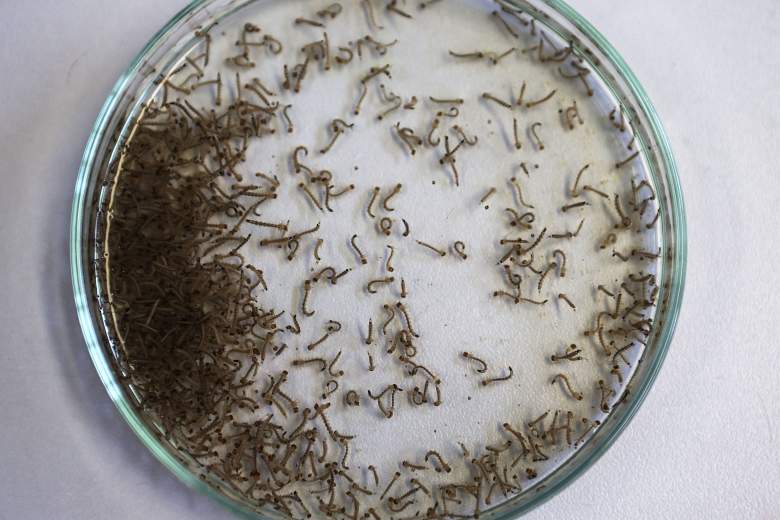
Mosquitoes carrying the Zika virus are thought to put pregnant women at risk of microcephaly. But could Pyriproxyfen be the cause? (Getty)
South Dakota has its first confirmed case of the Zika virus, the state’s health department said Monday.
A South Dakota woman who traveled to “a country where Zika virus is currently transmitted” later developed symptoms of the mosquito-borne virus. Her case was confirmed by the Centers for Disease Control and Prevention, the South Dakota Department of Health said.
Far from the tropical regions where the virus was discovered, South Dakota joins a growing list of other states with Zika cases. As of Aug. 17, the CDC reports more than 2,000 travel-related cases in the U.S. and 14 locally-acquired cases in Florida, including a breakout in Miami Beach.
Here is what you need to know about Zika in South Dakota:
1. South Dakota Is One of the Last States to Confirm a Zika Case

(Getty)
While Zika has hit other upper Midwest states, including 31 cases in Minnesota, 13 in Iowa, 20 in Wisconsin and one in neighboring North Dakota, this is the first time the virus has been confirmed in a South Dakota resident.
South Dakota is one of the last holdouts of its residents contracting Zika in the country. It is the 48th state (plus Washington, D.C.) with a confirmed case. Alaska and Wyoming are now the only states without a confirmed case of Zika, CDC data show.
“This is a good reminder for anyone who travels to Zika-affected areas that it’s important to protect themselves from mosquito bites,” said Dr. Lon Kightlinger, state epidemiologist for the department said in a news release.
2. South Dakota has ramped up Zika prevention in recent months

Gov. Dennis Daugaard during his State of The State address in 2012. (AP Photo/Doug Dreyer/ Heavy archives)
South Dakota Gov. Dennis Daugaard announced an initiative in May aimed at battling the mosquito-borne virus, which included waste collection and grant funding, according to KDLT.
The state’s Department of Environment and Natural Resources began scheduling cleanups after the governor announced a $650,000 grant to dispose of things like tires, which are “breeding grounds” for mosquitoes, on May 11. The health department also began issuing grants to fund local mosquito control programs, KDLT reported.
“[I]t’s prudent to take steps now to help prevent the spread of this virus in our state by removing tires as prime breeding grounds for mosquitoes,” Daugaard said in May.
Daugaard also asked residents to take preventative measures by wearing proper clothing during mosquito season and avoid the blood-sucking insects when they’re most active — from dusk until midnight, KELO reported.
3. It’s difficult to transmit Zika in South Dakota, doctors say

Aedes aegypti mosquito larvae are seen in a lab at the Fiocruz institute in Recife, Pernambuco state, Brazil. A genetically modified version can be used to cut down the mosquito population and reduce the Zika risk. (Getty)
In an interview with the Argus-Leader, Sioux Falls-based doctors said it’s unlikely for Zika to be transmitted in the state unless residents travel to areas with the virus.
“I would strongly prefer that they not travel to these areas,” Dr. Fares Masannat, a physician who is part of the Infectious Disease Specialists group, told the Argus Leader.
Because the virus can infect unborn children, if their mothers are carrying it, Sanford’s Infectious Disease and Travel Medicine Clinic is developing strategies to help doctors identify patients whose unborn children may be at risk for the disease and to educate pregnant women on the risks, Dr. Wendell Hoffman told the Argus Leader.
4. The Infected South Dakota Woman Traveled to the Caribbean Area & Developed Symptoms in July

Zika is transmitted by mosquito, including a kind that lives in the U.S. (Getty)
The Argus Leader reports that the South Dakota woman infected with the Zika virus traveled to the Caribbean and developed symptoms in mid-July.
Zika is traditionally found in Central and South America countries, or tropical areas with infected mosquitoes, and can be transmitted through bites or through sex and blood transfusions, according to the CDC.
While an overwhelming majority of cases in the U.S. have been transmitted through Americans’ travel to other countries, a recent outbreak in Miami Beach, Fla., has proven that mosquitoes in South Florida can carry the disease.
5. The Federal Government Still Hasn’t Funded Any Anti-Zika Measures

Dr. Vanessa Van Der Linden, the neuro-pediatrician who first recognized the microcephaly crisis in Brazil, examines a 2-month-old baby with microcephaly on Jan. 27 in Brazil. (Getty)
Partisan politics in Washington, D.C. is raising Zika-related funding questions around the country.
After Senate Democrats in June rejected a $1.1 billion Republican funding proposal to counter Zika, Congress has yet to approve any funding related to the mosquito-borne illness. The GOP proposal, which also targeted defunding Planned Parenthood and parts of Obamacare, was less than the $1.9 billion President Barack Obama requested from the legislative branch.
Politico reported in June the decisions by both parties could have an adverse effect on campaign season and the November elections. Without Congress approving a large quantity of Zika-related funding, the CDC has announced a number of state grants.




